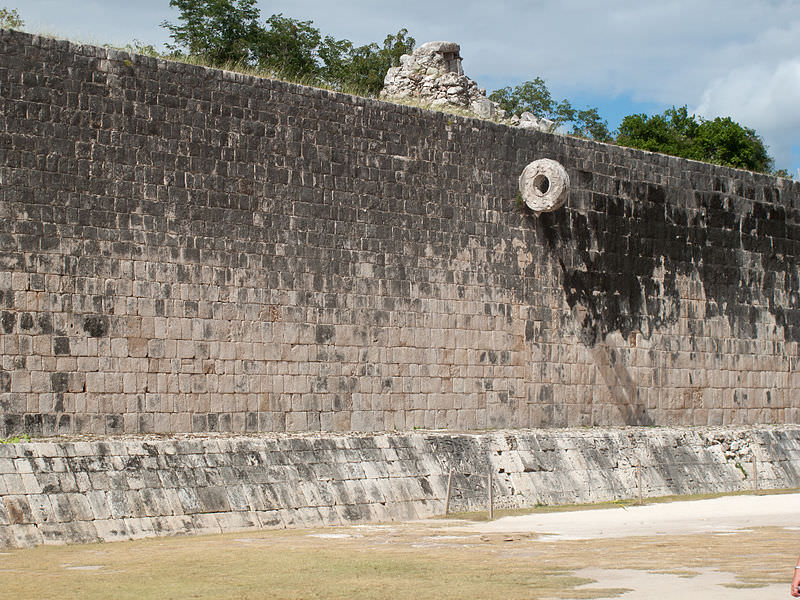In the heart of ancient Mesoamerica, amid the bustling streets of the Aztec capital of Tenochtitlan, a spectacle unlike any other captivated the masses: the deadly ball game. Far more than mere entertainment, these intense athletic contests held profound cultural, religious, and even sacrificial significance. Join us as we explore the captivating world of Aztec ball games, uncovering the reasons behind their existence, the nature of the games themselves, and the rituals surrounding them.
Why Did the Aztecs Play Deadly Ball Games?
For the Aztecs, ball games were more than just sporting events; they were sacred rituals infused with religious and cosmological symbolism. The ball game, known as tlachtli or ullamaliztli in Nahuatl, served multiple purposes within Aztec society.
First and foremost, ball games were seen as offerings to the gods, particularly the deity Xiuhtecuhtli, the god of fire and time. By engaging in these athletic contests, the Aztecs believed they could appease the gods, ensuring the continued fertility of the land and the prosperity of their civilisation.
Additionally, ball games served as a form of entertainment for the Aztec elite, including nobles, warriors, and rulers. Spectators would gather in grand stadiums, known as tlachtli or tlachco, to witness the skill and athleticism of the players, as well as the dramatic conclusion of the games.
What Were Aztec Ball Games Like?
Aztec ball games were highly structured and ritualised affairs, with specific rules and protocols governing every aspect of the contest. The game typically involved two teams of players, each striving to propel a solid rubber ball through a stone hoop or ring mounted on the walls of the playing field.
Players were forbidden from using their hands or feet to touch the ball, relying instead on their hips, elbows, and knees to keep the ball in motion. The game required agility, strength, and strategic thinking, as players sought to outmanoeuvre their opponents while avoiding penalties.
The stakes were high in Aztec ball games, as victory often carried political, social, and religious significance. Winning teams were celebrated as heroes, showered with praise, and rewarded with valuable prizes, while losing teams faced potential humiliation and, in some cases, sacrificial offerings.
When and Where Were Aztec Ball Games Played?
Aztec ball games were played throughout the empire, from bustling urban centres like Tenochtitlan to remote provincial towns and villages. The grandest stadiums, however, were found in the heart of the capital, where massive stone structures served as the backdrop for these spectacular contests.
The most famous of these stadiums was the Great Ballcourt of Tenochtitlan, located within the ceremonial precinct of the city. Spanning over 150 meters in length, this impressive structure featured intricately carved stone walls, imposing stone rings, and elaborate reliefs depicting scenes from Aztec mythology.
How Were Aztec Ball Games Integrated into Society?
Beyond their religious and recreational significance, Aztec ball games played a crucial role in reinforcing social hierarchies and political structures within Aztec society. Participation in the games was reserved for elite warriors, nobles, and members of the ruling class, serving as a means of demonstrating prowess and status.
Furthermore, ball games were often accompanied by elaborate ceremonies and rituals, including offerings to the gods, music, dance, and feasting. These communal gatherings fostered a sense of unity and identity among the Aztec people, reinforcing their shared cultural heritage and values.
Legacy of Aztec Ball Games
Despite the eventual decline of the Aztec Empire, the legacy of their ball games endured. The rituals, symbols, and traditions associated with tlachtli continue to resonate in modern-day Mexico, where indigenous communities honour their ancestors through ceremonial reenactments and cultural celebrations.
Moreover, the influence of Aztec ball games extends beyond cultural heritage to the realm of sports. Modern sports such as soccer and basketball, with their fast-paced action and competitive spirit, can trace their roots back to the ancient traditions of Mesoamerican ball games.
In conclusion, the Aztec tradition of deadly ball games represents a fascinating intersection of sport, religion, and culture. Through these athletic contests, the Aztecs sought to honour the gods, entertain the masses, and uphold the values of their civilisation. While the games themselves may have faded into history, their legacy lives on, serving as a testament to the enduring spirit of Mesoamerican civilisation.
